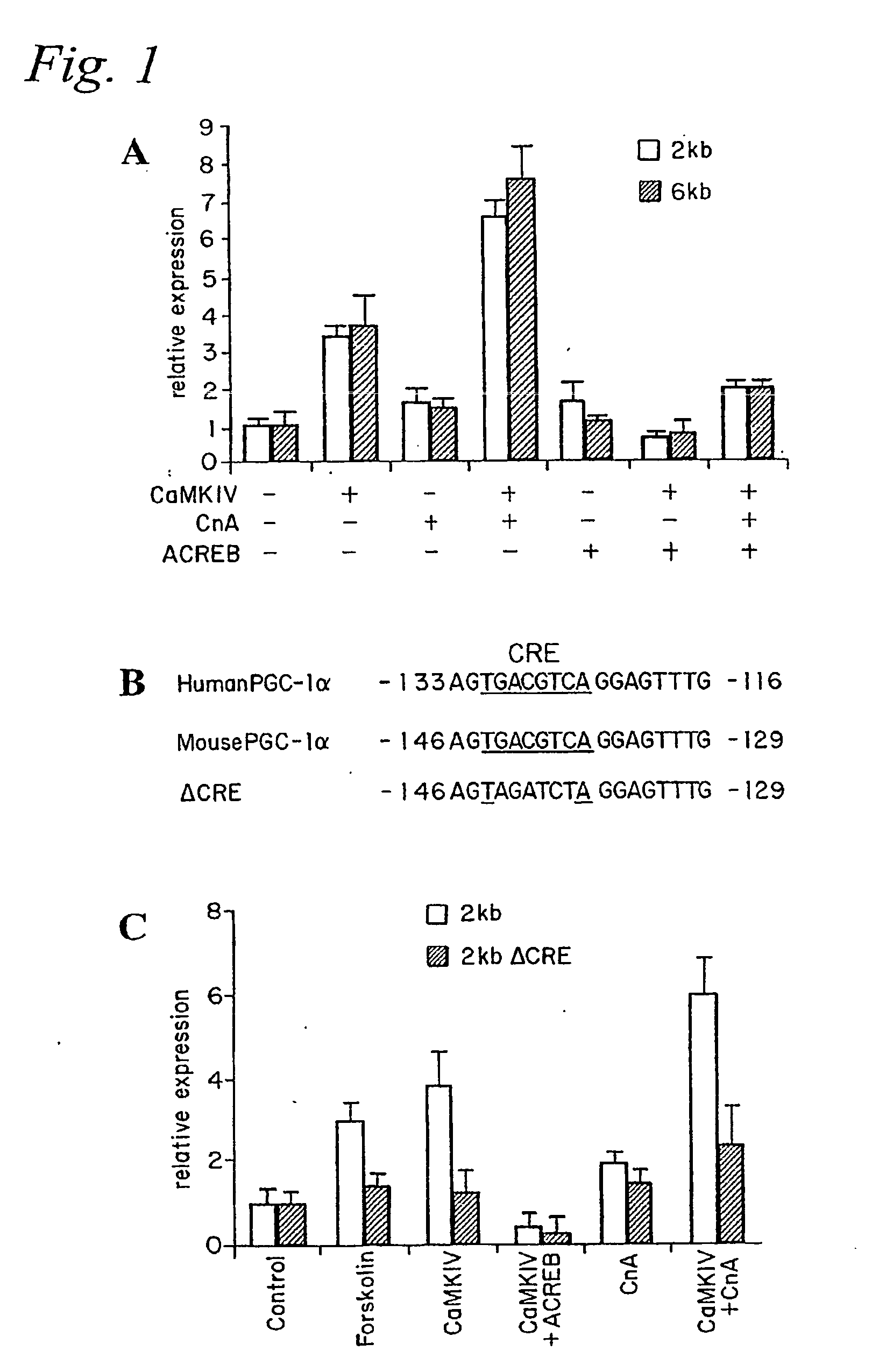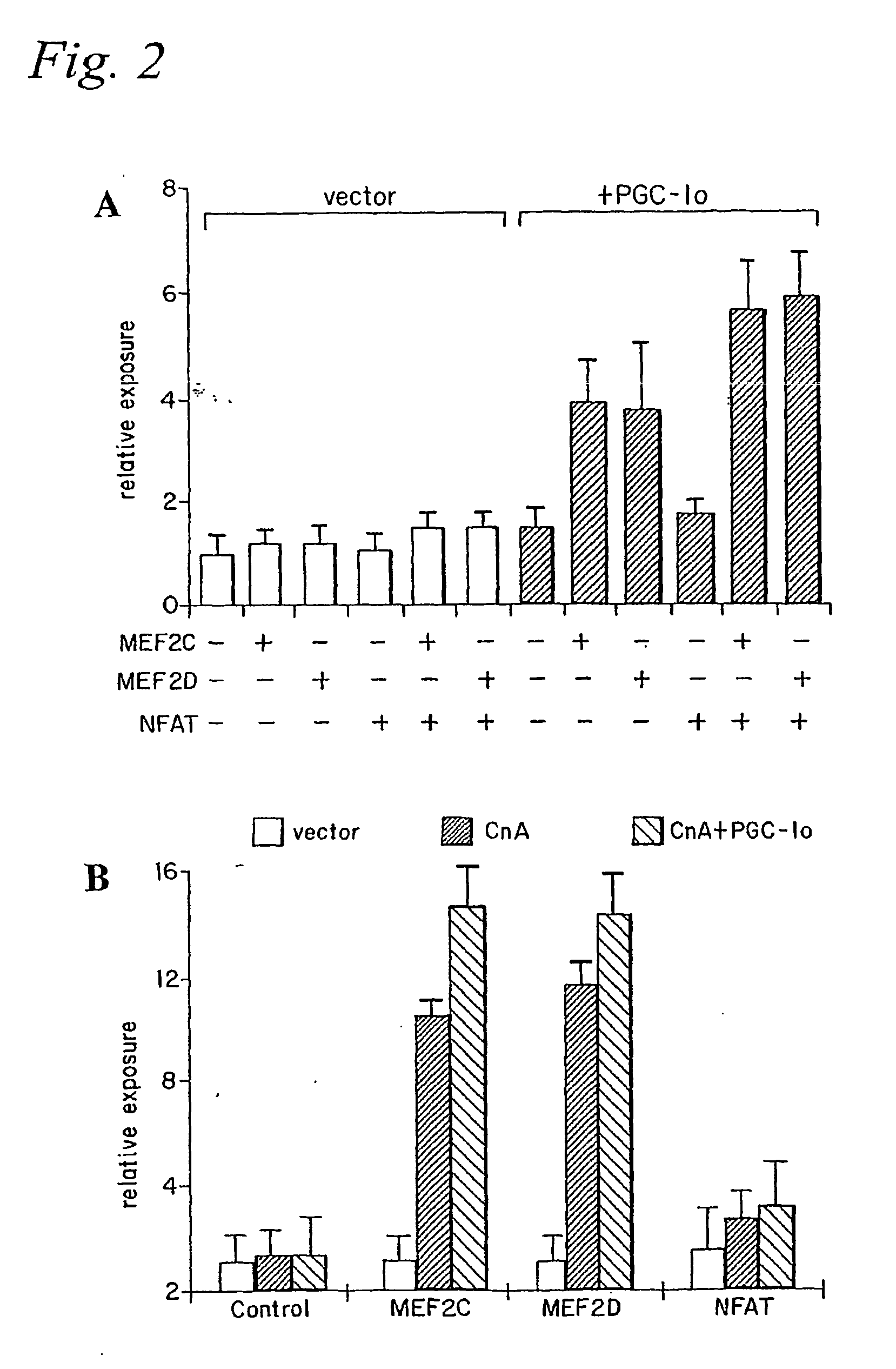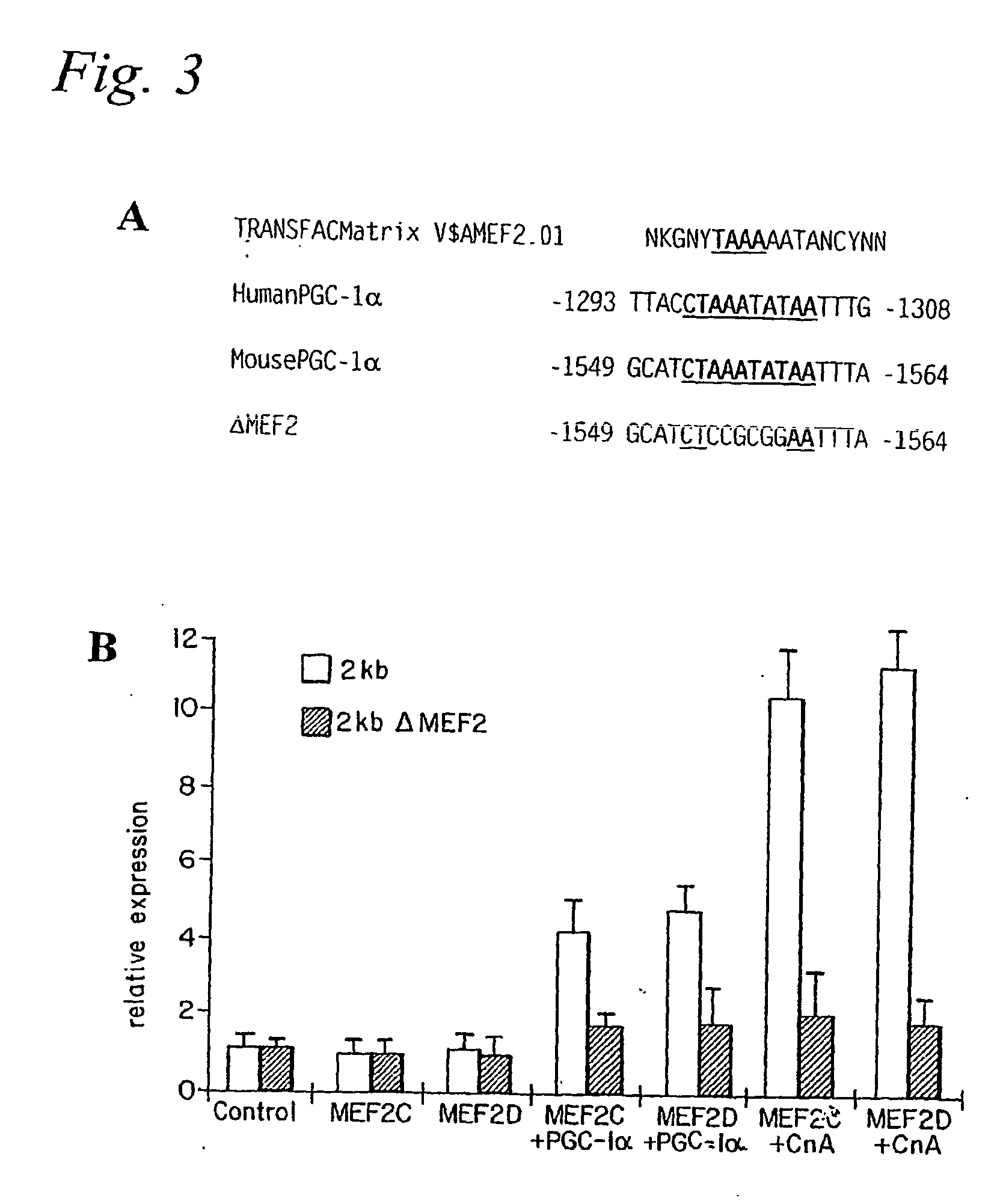Methods and composition for modulating type I muscle formation using pgc-1 alpha
a type i muscle and pgc technology, applied in the direction of instruments, peptides/protein ingredients, peptides, etc., can solve the problems of loss of type i oxidative skeletal muscle fibers, increased glycolytic fibers, chronic fatigue, etc., to increase type i muscle formation and maintain muscle cell determination
- Summary
- Abstract
- Description
- Claims
- Application Information
AI Technical Summary
Benefits of technology
Problems solved by technology
Method used
Image
Examples
example 1
PGC-1α is Preferentially Expressed in Slow Twitch Muscle Fibers
[0162] This example describes the investigation of PGC-1α expression levels in muscle. RNA was extracted from various types of mouse muscle using standard methods and subjected to a standard Northern blotting protocol using a PGC-1α probe. High levels of PGC-1α mRNA expression were seen in soleus (slow-twitch muscles). Extensor digitorum longus (EDL), quadriceps, gastrocnemius, and tibialis anterior (TA) muscles (all fast-twitch muscles) all showed low-level expression. PGC-1 (expression was also examined in soleus, EDL, quadriceps, and TA muscles. Moderate expression was seen in all of these muscle types.
example 2
Induction of Slow-Twitch Muscle Fiber Differentiation by Transgenic Overexpression of PGC-1α
[0163] This example describes the results of overexpression of PGC-1α in transgenic mice. The PGC-1α cDNA sequence was placed under the control of a muscle-specific promoter (the muscle creatine kinase (MCK) promoter). The muscle creatine kinase promoter is expressed in both type I and type II muscle fibers, but is enriched in type II muscle. Transgenic mice were generated using DNA microinjection and screened by PCR. Four independent founder lines were obtained (#23, #26, #29, #31) and mated with wild type mice to obtain progeny for use in experiments. Transgenic lines #23 and #31 showed strong PGC-1α mRNA expression. Line #26 showed low-level PGC-1α mRNA expression. Line #29 showed little PGC-1α mRNA expression. Western blotting showed that PGC-1α protein expression levels were not increased in the soleus (type I) muscles of the high expressing transgenic mice. While no expression of PGC-1α...
example 3
Autoregulatory Loop Controls PGC-1α Expression in Skeletal Muscle
[0167] Skeletal muscle contains muscle fibers that differ greatly in their oxidative capacity. Prolonged electrical stimulation or exercise training can lead to a muscle fiber type conversion of type II (fast-twitch) to type I (slow-twitch) fibers (Booth, F. W., and Thomason, D. B. (1991) Physiol Rev 71, 541-585). Conversely, physical inactivity or denervation can cause a switch to type II fibers (Booth, F. W., and Thomason, D. B. (1991) Physiol Rev 71, 541-585). The conversion to type I fibers is characterized by a dramatic change in expression of a large number of genes that increase the oxidative capacity and number of mitochondria, as well as synthesis of distinct contractile proteins characteristic of this muscle fiber type (Berchtold, M. W., et al. (2000) Physiol Rev 80, 1215-1265). Exercise training is accompanied by an increase in motor nerve activity that subsequently elevates intracellular calcium levels in ...
PUM
| Property | Measurement | Unit |
|---|---|---|
| Northern blotting | aaaaa | aaaaa |
| physical | aaaaa | aaaaa |
| nucleic acid expression | aaaaa | aaaaa |
Abstract
Description
Claims
Application Information
 Login to View More
Login to View More - R&D
- Intellectual Property
- Life Sciences
- Materials
- Tech Scout
- Unparalleled Data Quality
- Higher Quality Content
- 60% Fewer Hallucinations
Browse by: Latest US Patents, China's latest patents, Technical Efficacy Thesaurus, Application Domain, Technology Topic, Popular Technical Reports.
© 2025 PatSnap. All rights reserved.Legal|Privacy policy|Modern Slavery Act Transparency Statement|Sitemap|About US| Contact US: help@patsnap.com



